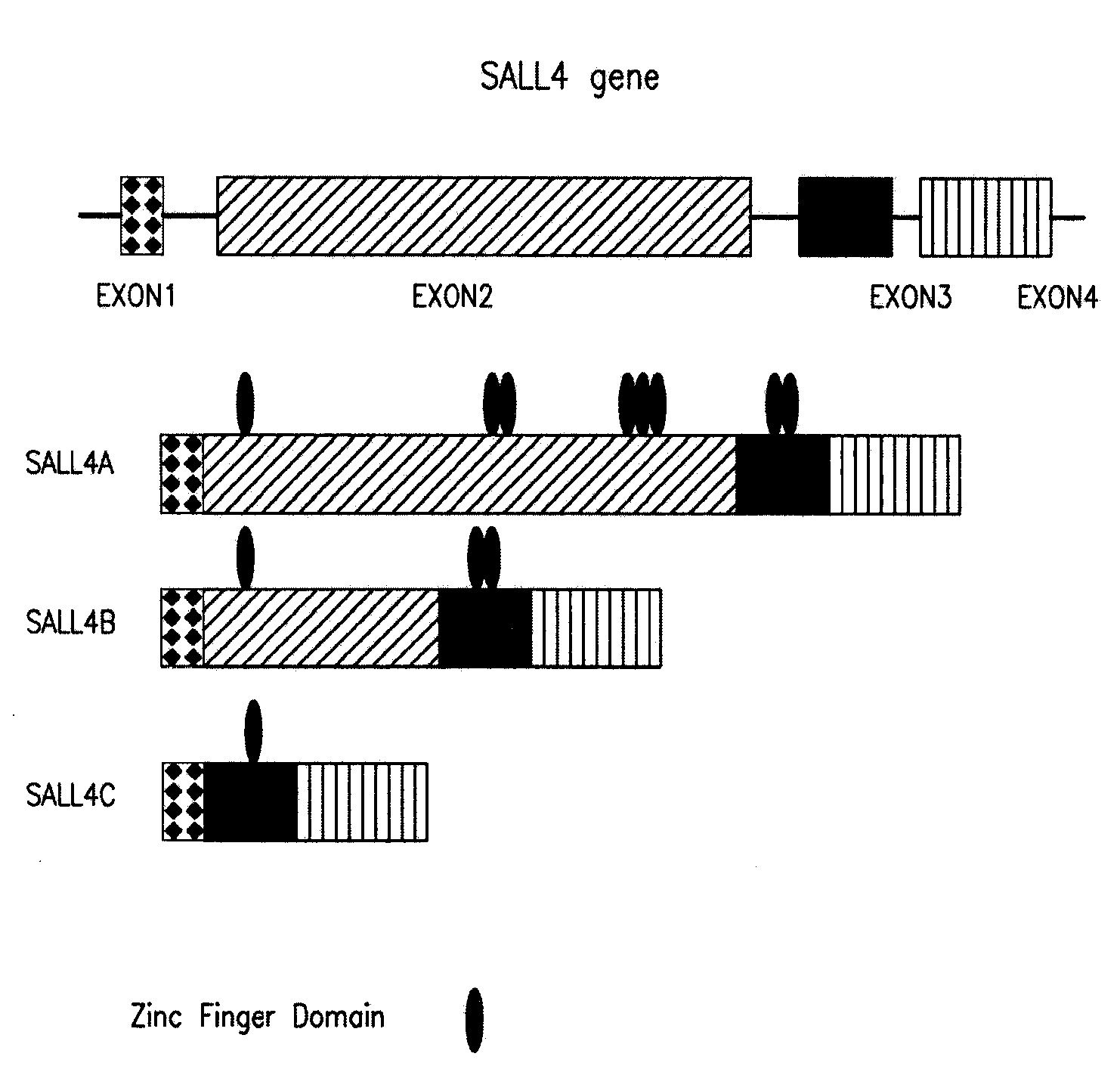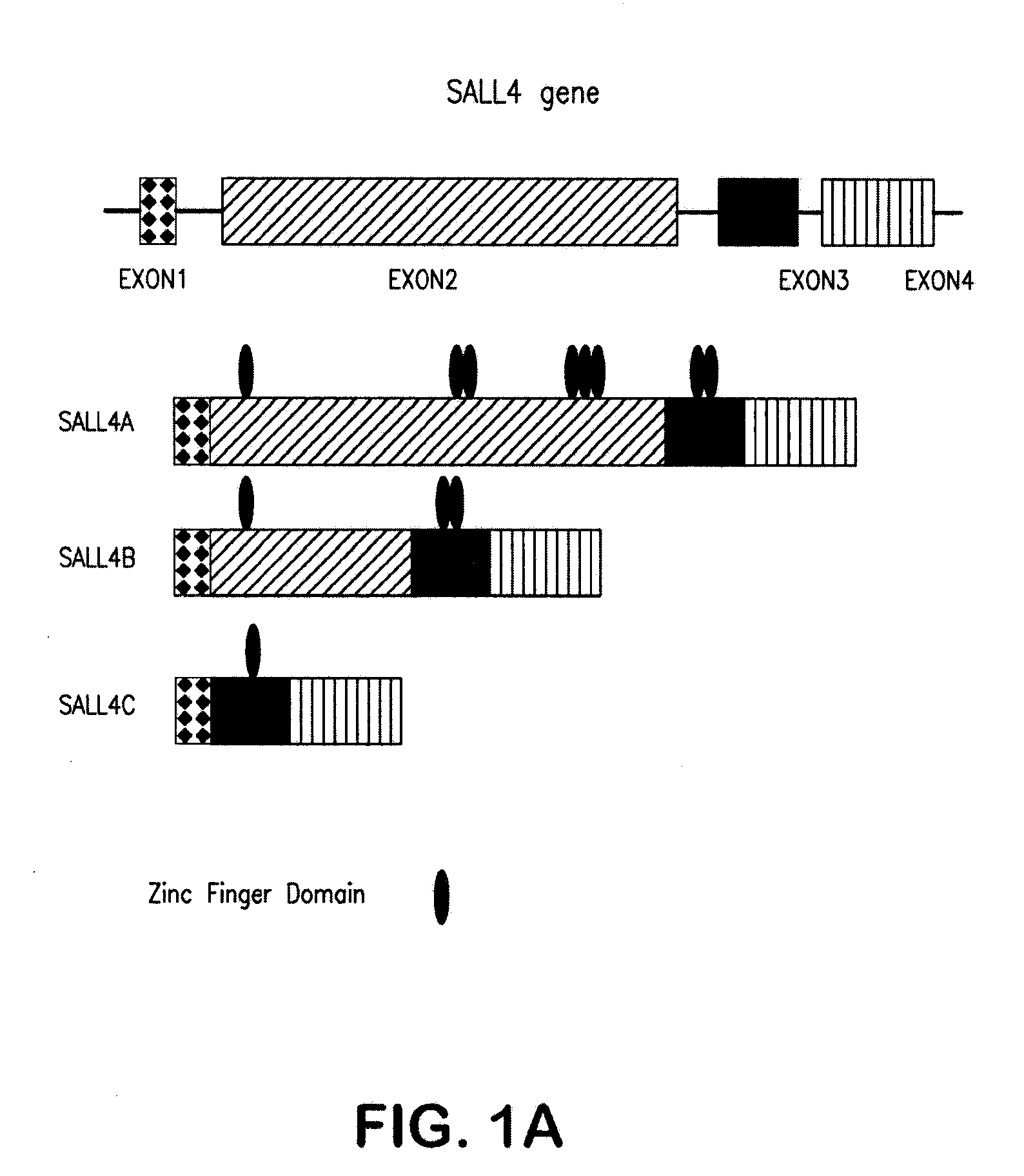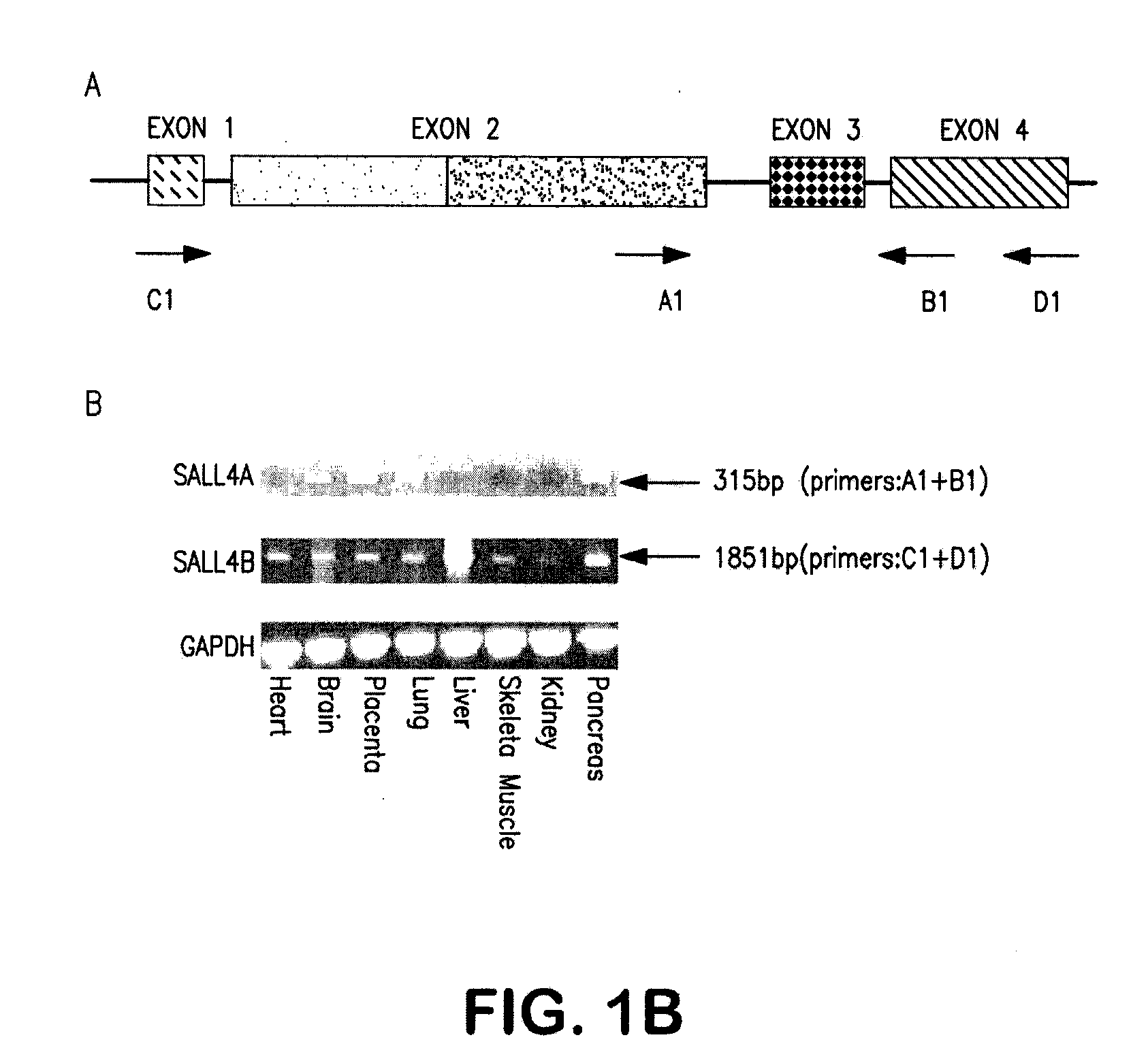Targeting of sall4 for the treatment and diagnosis of proliferative disorders associated with myelodysplastic syndrome (MDS)
- Summary
- Abstract
- Description
- Claims
- Application Information
AI Technical Summary
Benefits of technology
Problems solved by technology
Method used
Image
Examples
example 1
Molecular Analysis of SALL4
[0228]Molecular cloning of two alternatively splicing isoforms of human SALL4
[0229]Two full-length transcripts of SALL4 were isolated by 5′ and 3′ RACE-PCR (rapid amplification of the 5′ and 3′ cDNA ends-polymerase chain reaction) with the use of fetal human kidney Marathon-Ready cDNAs (BD Biosciences Clontech) as templates.
[0230]Sequence analysis of the larger cDNA fragment isolated revealed a single, large open reading frame, designated as SALL4A that started from a strong consensus initiation sequence and was expected to encode 1,053 amino acids. The other splicing variant of SALL4, designated SALL4B, lacked the region corresponding to amino acids 385-820 of the full-length SALL4A (FIG. 1a). The putative protein encoded by SALL4B cDNA was expected to consist of 617 amino acids.
[0231]To rule out the possibility that these two apparent splicing variants might result from artifacts, both variant mRNA sequences with corresponding sequences of the human geno...
example 2
SALL4 is a Major Master Regulator in ES Cells
[0260]Growing evidence has shown that Sall4 plays a vital role in governing ES cell fate decisions. SALL4 is expressed early in embryonic development and exhibits a similar expression pattern to that of Oct4. SALL4-null ES cells exhibited significantly reduced proliferation and microinjection of SALL4 small interfering RNA into mouse zygotes resulted in reduction of SALL4 and Oct4 mRNAs prior to implantation. These findings prompt the investigation into global downstream targets of SALL4 in embryonic cells. Using a ChIP-chip assay, a genome scale mapping of SALL4 binding genes was carried out in the murine embryonic stem cell line W4. Using the RefSeq promoter tiling array provided by NimbleGen Systems Inc, a 2.7 kb region (2 kb upstream and 500 bp downstream from the transcription start site) of each promoter region was probed. Hybridizations to these arrays with SALL4 chromatin-immunoprecipitated DNA from W4 cells revealed a massive gen...
example 3
SALL4 in ES Cells and LSCs
[0284]SALL4 may be one of few genes that creates a connection between LSCs and the self-renewal properties of normal HSCs and ES cells. Interestingly, SALL4 protein expression is always correlated with the presence of stem and progenitor cell populations in various organ systems including bone marrow.
Constitutive Expression of SALL4 Protein in Primary Human AML and SALL4 Expression in MDS is Associated with High-Grade Morphology
[0285]Amplification of the SALL4 gene, as demonstrated by digital karyotyping or analysis through quantitative polymerase chain reaction (Q-PCR), is seen in approximately 75 percent of human AML cases. To determine if the observed aberrant SALL4 expression is also present at the protein level, 81 AML samples ranging from AML subtypes M1 to M5 (FAB classification) were examined. All 81 AML samples have shown aberrant SALL4 expression, which was consistent with the SALL4 mRNA expression levels as demonstrated by real-time polymerase ch...
PUM
| Property | Measurement | Unit |
|---|---|---|
| Volume | aaaaa | aaaaa |
| Volume | aaaaa | aaaaa |
| Volume | aaaaa | aaaaa |
Abstract
Description
Claims
Application Information
 Login to View More
Login to View More - R&D
- Intellectual Property
- Life Sciences
- Materials
- Tech Scout
- Unparalleled Data Quality
- Higher Quality Content
- 60% Fewer Hallucinations
Browse by: Latest US Patents, China's latest patents, Technical Efficacy Thesaurus, Application Domain, Technology Topic, Popular Technical Reports.
© 2025 PatSnap. All rights reserved.Legal|Privacy policy|Modern Slavery Act Transparency Statement|Sitemap|About US| Contact US: help@patsnap.com



